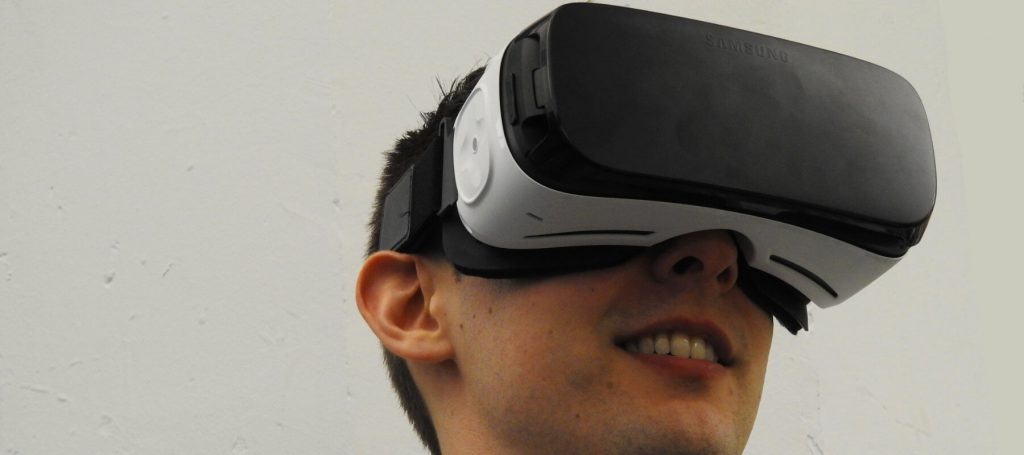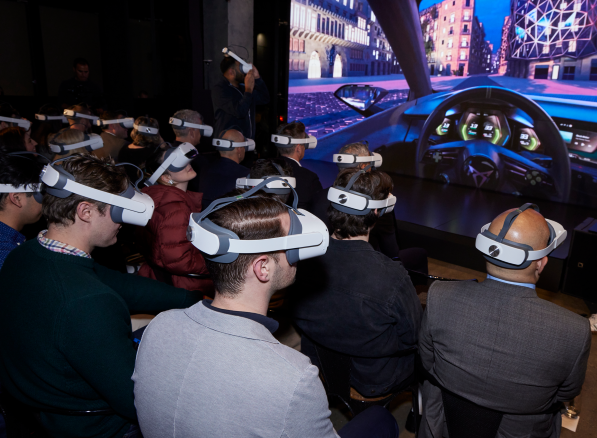Just a couple of years ago, the terms virtual and augmented reality (VR and AR) might have only been familiar to those with an interest in tech. These days, however, AR and VR – known collectively either as immersive technology or extended reality (XR) – are just about everywhere. Nonetheless, some people still struggle to differentiate between the two.

In this guide, we’ll explore the difference between VR and AR. Further, we’ll identify some of the potential uses and business sectors that are suited to each.
What is virtual reality?
Virtual reality is the use of computer technology to create an entirely simulated environment. When you view VR, you experience a reality that is completely different from the one in front of you. It could be animated, artificial or an actual setting that has been recreated in virtual reality.
You can view virtual reality through a special VR headset, such as Oculus Rift or HTC VIVE, or by using your smartphone, a VR app or a headset such as Google Cardboard. Once you’re in the virtual world, you can move around and look in every direction as if you were physically there.
What is augmented reality?
The key difference between VR and AR is that rather than creating an entirely new world, augmented reality supplements a real world view with virtual elements. Those virtual elements can include sounds, graphics, videos or GPS data.
You can view AR with a smartphone or tablet. The camera on a smartphone or tablet shows you the real world; then, you can use an AR app to overlay that image with additional information such as text or graphics.
Arguably, the most well-known example of AR in practice is the Pokémon Go game, which took the world by storm in 2016. However, education and training applications also use AR widely. Similarly, Snapchat filters that overlay digital features on a live selfie are an AR technology.
AR vs. VR – which is right for you?
It’s not always a case of AR vs. VR. Sometimes, you can blend these two technologies together to create a more immersive experience. For example, you can augment VR applications with vibrations to add an extra dimension to the virtual experience.
What sectors commonly use AR and VR?
Virtual and augmented reality are becoming increasingly common in a diverse range of industries and sectors.
- Augmented reality
In healthcare, surgeons can wear AR glasses to provide the vital information they need while performing operations. Manufacturing sectors around the world have also adopted AR; it’s used to project a digital operating canvas onto a work surface to provide audio and visual prompts that guide manual manufacturing processes. Furthermore, AR has made huge leaps in the education and training sector, where it helps to make learning materials more accessible for visual learners.
- Virtual reality
The gaming and entertainment industry makes wide use of virtual reality. The latest VR gaming stations now provide exceptional experiences at home. It has also become extremely popular in the world of marketing by helping brands add wow factor to their promotional campaigns. Travel and hospitality firms have also been quick to realise the potential of VR to showcase destinations and accommodation before guests make a booking.
At Hire Intelligence, we stock a leading range of the latest virtual and augmented reality technology available on short-term and long-term rental deals. Get in touch with us to discuss your requirements. Or, request a quick quote from our team.
You can now follow us on Instagram for the latest tech and rental news.



